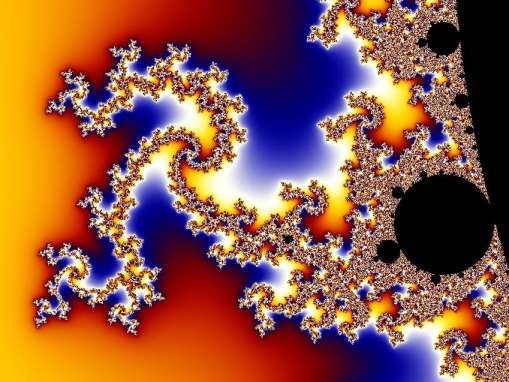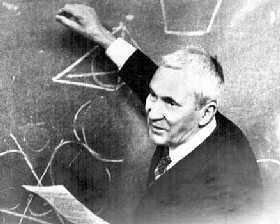Captain America, Kolmogorov and my other heroes / QED 2
Previously
Hello guys!This is the second post in the series I announced in my video yesterday

Philosophy
- What is the nature of "mathematical objects"?
- What does it mean to "do math"?
- What is mathematics, really?
If you want to go down that rabbit hole, I recommend the Stanford Encyclopedia of Philosophy, which has some fantastic pointers. So for example, the there is an article on Mathematical Platonism which covers a common perspective. We see this question has been around since forever. In the article "Philosophy of mathematics" on Wikipedia, you find a section Contemporary schools of thought that give more directions.
For the time being, and mostly for convenience sake, I'm gonna adopt a somewhat formalist perspective. I'm gonna talk about symbols and rules. In fact, Rewriting is a field on its own, but we're gonna come back to that only at another time.
>We can write down some text and come back to it at a later time, we can apply rules and we can come up with new ones.
Let us relax for a moment and assume that that's a fair assumption.
Sequences of symbols
Here are our weapons of choice:
()
())((()()(()()())()()()))))))(())(()()((()))())())()))())()))I'll call this construction "sequences of symbols", or "string", or "expression", depending on the context. Now here's another such sequence:
)(()())()(())()()(())(()()((()()(())(())())((()()))That one was maybe a little shorter.
Let's consider another:
))))))))))))))))))))))))))))))))))))))))((((((()))))))There is something very different about the last one: It's not so "random" as the two above. This is crucial!
One may say the last one is more simple. Less complex. More concretely, I can shortly describe that latter. Say you got your friend on the phone and you want to tell him what sequence of symbols you look at. You may say the following:
"I Look at fourty open brackets, followed by seven closed ones and then just as many closed ones."
Meanwhile, for the second string, you cannot find a neat sentence descibing it. What you can do, at best, is say the following:
"I look at a bunch of brackets and I'm gonna tell them to you in sequence: closed, open, open, closed, open, closed, closed, open, closed, open ...
... closed closed"
The observiation that we can somehow classify sequences of symbols goes by the name of Kolmogorov complexity. The idea is prevalent. For example, it takes not much data to describe the following image in it's completion. You need to specify 3 colors, 4 raddi, the specification of the star and the location of one corner.

You can communicate the object by phone. Meanwhile, the following picture is drawn "by hand" and since the curves follow no obvious pattern, describing the picture precisely over the phone will be a huge task.

Kolmogorov complexity is, roughly, the hardness to describe something with respect to some language. It has its foundation in logic and computer science, but is also studied in the context of geometries, like fractals, which are complicated looking pictures that secretly actually have an extremely simple mathematical description. Here's the famous Russian mathematican Andrey Kolmogorov, born 1903, after which it is named:

Syntax
Why does this matter now?
It matters because complexity puts things in line and order.
We can deal with simple things but not so much with highly complexity notions.
I'm not sure if this point comes across right, but I mean this also from a practical perspective and it has immediate consequences for how our theories look like.
If you look at math, or any programming language, or even English grammar,
you find that it is "not completely over the place". Out of necessity.
We work with "simple expressions" and we wouldn't get far if we didn't.
In the course of this series, we're gonna deal with formal logics that
provide the language to formalize mathematical intuition.
In the sea of all expressions you can imagine, something like
(3+5) / 4 = 2 / 1or
print("Hello, {}".format("World!"))(which is Python programming language syntax) falls in a very restricted class of statements. There is a grammar to it. And a simple one at that.
On the other hand, like with fractals, simple rules don't mean the result can be daunting :)
Outlook
In the upcoming posts, we'll see how far those two brackets can get us. If you like this post, please go there and help me tailor my plan so that it fits what works on steemit and follow me.
Widget
Okay, by now you see that this series is gonna have to go slow, but I also got a lot of stories and funfact and curiousities to tell that I don't want to keep to myself. Thus I'll end these with something sweet.
Today I want to point out why my user name means. QED is short for
two
things relevant in science and math.
On the one side, in logic, it stands for
quod erat demonstrandum.
As the Wikipedia article explains, this is lating for
"what was to be demonstrated".
On the other hand, it's also the abbreviation for
Quantum electrodynamics.
This is the physical model that successfully incoorporates quantum effects
into the theory of electrodyanmics. The former is roughly from the 1930's
(Schwinger, Feynman,...) and the latter is from the century before that (Ampère, Maxwell,...).
We're gonna get there in the main series. Eventually.
In the meantime, check out this odd
real world behaviour :)
Take care!